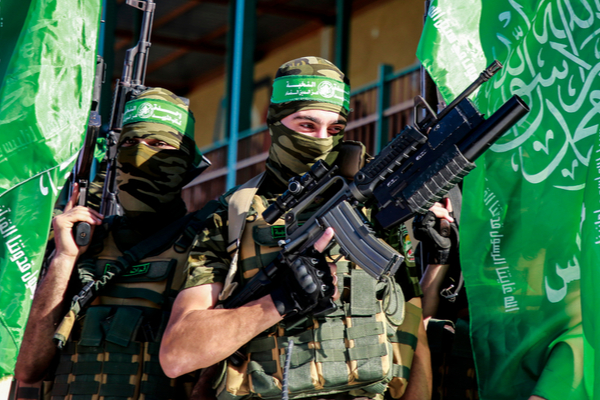As the “Jerusalem Axis” becomes stronger, calm in the Gaza Strip is in jeopardy.
By Baruch Yedid, TPS
Iran is turning Hamas into a proxy arm for all intents and purposes, like Hezbollah in Lebanon, and may require it to act contrary to its positions, even at the cost of harming the calm in the Gaza Strip.
The connection between Hamas and the “Jerusalem Axis”, the radical Iranian-led Shiite, which Hamas views as a strategic asset, has recently been tightening.
A few weeks ago, rockets were fired from Lebanon at Israel, and not for the first time. Since Operation Guardian of the Walls a year ago, terror organizations in southern Lebanon have fired rockets at Israel five times.
The radical Iranian “Axis of Jerusalem” was established as a counterweight to the Abraham Accords signed between Israel and Arab countries, and has strengthened since Guardian of the Walls. It is gradually becoming Hamas’ strategic depth toward another attack on Israel, perhaps in the near future.
This axis includes Hezbollah, Hamas operatives in Lebanon, pro-Iranian organizations in Syria and Iraq, and the Houthis from Yemen.
The Hamas leadership in Gaza is trying to keep its distance from direct terror attacks on Israel from the Strip as a lesson from Guardian of the Walls in which it was severely hit by Israeli counterstrikes. The Gaza leadership attaches importance to the reconstruction of the Gaza Strip.
However, Hamas’ military intensification operations and declarations made by its senior officials indicate that the next campaign is planned to be a “regional campaign” in which organizations in the Gaza Strip, along with other members of the Jerusalem Axis, will take part.
Senior Hamas figures who threaten to act against Israel strive to keep Gaza out of the conflict, and repeat that “the campaign will not be limited to Palestinian territories and will be extended to additional arenas backed by the Jerusalem Axis.”
Iran Prefers Islamic Jihad Over Hamas
In his last speech earlier this month, Hamas’ leader in Gaza Yahya Senwar said that Hamas will “break the naval siege” on Gaza with the help of the “Jerusalem Axis.” Ziad Nahala, the secretary-general of the Islamic Jihad terror group, said on Tuesday that “the Axis of Jerusalem must be strengthened,” and “we will not accept the takeover of al-Aqsa.”
Hamas’ decision to turn to the “Jerusalem Axis” came last year after a lengthy debate between supporters of the Shiite Iranian camp and those who opposed it, who expressed concern that turning to Iran would close Hamas’ door to moderate Sunni Arab states.
The protracted debate was decided when the members of the military wing had the upper hand and the decision was made to turn to the Iranian-led “Jerusalem Axis.”
Hamas’ appeal to the Iranian axis inevitably entails significant military benefits for Hamas, as its spokesmen have described, but in recent years Iran has also used critical financial support for Hamas to make it an Iranian proxy arm, and to use it contrary to Hamas’ own positions and interests.
As the “Jerusalem Axis” becomes stronger, calm in the Gaza Strip is in jeopardy. It should be emphasized that Iran has no problem with violating the relative quiet in the Gaza Strip, contrary to Hamas’ position, and sources indicate that Hamas’ foreign leadership is also “disparaging” the current situation of calm, and so are groups within the Islamic Jihad.
Iran has at times taken advantage of its relations with the Islamic Jihad, which is clearly inclined toward Iran simply because Iran often prefers it over Hamas, with money and weapons, and encourages it to act independently against Israel even at the cost of harming the Gaza Strip.
It can be assumed that the “Jerusalem Axis,” which has been under construction in the past year, is also responsible for improving relations between Hamas and the Islamic Jihad.
